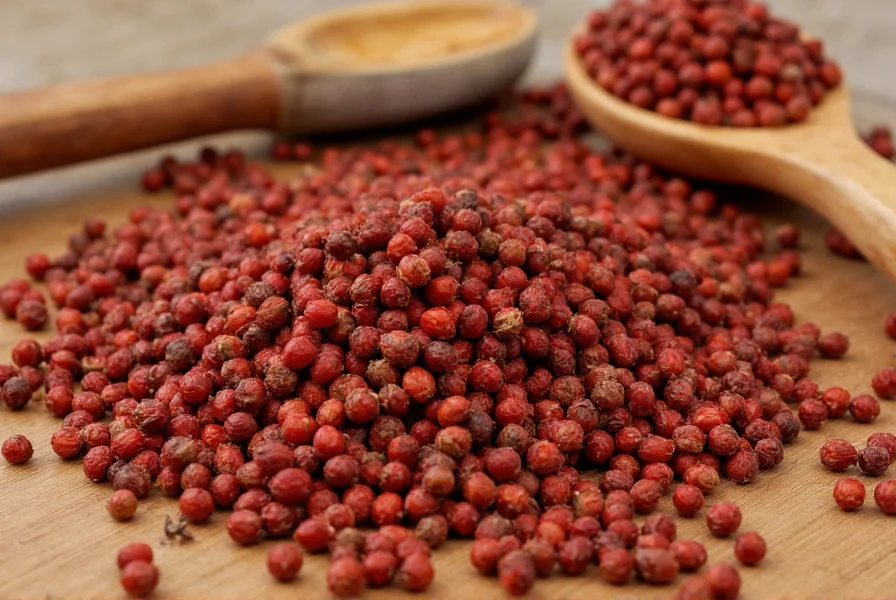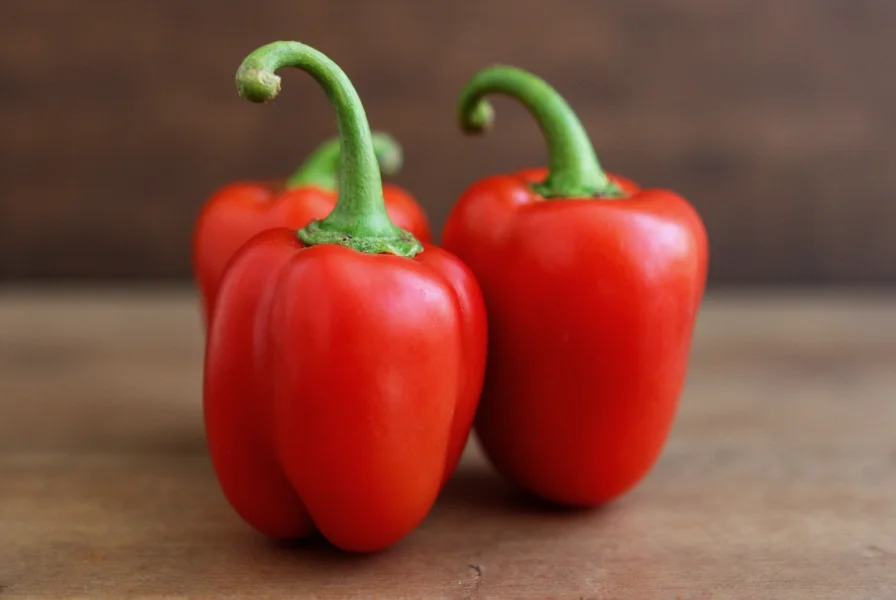When exploring the culinary world of peppers, it's essential to distinguish between verified varieties and potential naming confusions. The term “sultan pepper” doesn't appear in major agricultural databases, spice compendiums, or culinary reference materials as a distinct, recognized pepper variety. This absence in authoritative sources suggests several possibilities that home cooks and culinary enthusiasts should understand.
Understanding the Naming Confusion
Most “sultan pepper” queries likely stem from one of two common misunderstandings:
- Szechuan pepper misspelling - The phonetic similarity between “sultan” and “szechuan” (also spelled Sichuan) leads many to search using this incorrect term. Szechuan pepper, despite its name, isn't a true pepper but rather the dried berry of the Zanthoxylum plant family, known for its distinctive tingling sensation.
- Sumac confusion - Sumac, a deep red spice made from ground berries, is sometimes mistakenly called “sumac pepper” due to its powdered form, leading to further naming confusion.
Szechuan Pepper: The Most Likely Candidate
If you're searching for “sultan pepper,” you're probably looking for information about Szechuan pepper. This distinctive spice features prominently in Chinese, Tibetan, and Nepalese cuisines and offers unique characteristics:
| Characteristic | Description |
|---|---|
| Botanical Name | Zanthoxylum simulans or Z. piperitum |
| Flavor Profile | Citrusy, floral, with distinctive tingling/numbing sensation (due to hydroxy-alpha-sanshool) |
| Heat Level | Not measured in Scoville units (different mechanism than capsaicin) |
| Common Uses | Five-spice powder, mapo tofu, Szechuan peppercorn chicken |

Sumac: Another Possible Confusion
Sumac, often mistaken for a pepper due to its powdered form, comes from the berries of Rhus coriaria and features:
- Tangy, lemon-like flavor profile
- Deep burgundy red color
- Common in Middle Eastern cuisine (fattoush salad, za'atar spice blend)
- No heat or numbing sensation
- Rich in vitamin C and antioxidants

Why Proper Identification Matters
Correctly identifying spices is crucial for both culinary success and safety. Using Szechuan pepper when a recipe calls for black pepper (or vice versa) creates dramatically different results. The numbing quality of Szechuan pepper fundamentally changes how we perceive other flavors in a dish, making proper identification essential for authentic preparation.
Where to Find Authentic Szechuan Pepper
When shopping for what's likely being referred to as “sultan pepper,” look for:
- Asian grocery stores (best quality and freshness)
- Specialty spice retailers (both online and brick-and-mortar)
- Reputable online marketplaces with recent harvest dates
- Whole peppercorns rather than pre-ground (better flavor retention)
Quality Szechuan pepper should have a vibrant reddish-brown color and release a citrusy aroma when crushed between your fingers. Avoid products that appear dull, grayish, or have little aroma, as these indicate age and diminished quality.
Proper Storage Techniques
To maximize shelf life and flavor retention of Szechuan pepper:
- Store in airtight containers away from light and heat
- Keep whole peppercorns rather than pre-ground
- Use within 6-12 months for optimal flavor (though safe indefinitely)
- Consider refrigeration in humid climates
Common Substitutions
If you can't find Szechuan pepper, these alternatives provide similar (though not identical) flavor experiences:
- Asappago pepper (closest substitute with similar numbing quality)
- Black pepper + dash of citrus zest (for flavor approximation)
- Timut pepper (Nepalese variety with floral notes)
Final Clarification
The term “sultan pepper” doesn't correspond to any documented pepper variety in culinary science. When researching recipes or purchasing spices, using the correct terminology — Szechuan pepper for the numbing variety or sumac for the tart, red spice — ensures you get the authentic ingredient needed for proper flavor development in your dishes. Understanding these distinctions represents an important step in culinary literacy and helps prevent recipe failures due to ingredient confusion.
Is sultan pepper the same as Szechuan pepper?
No, “sultan pepper” is not a recognized spice variety. The term likely results from a misspelling of “Szechuan pepper,” which is the correct name for the distinctive numbing spice used in Chinese cuisine. Szechuan pepper comes from the Zanthoxylum plant family and creates a unique tingling sensation.
What can I use instead of sultan pepper in recipes?
If your recipe calls for “sultan pepper” (likely meaning Szechuan pepper), use authentic Szechuan peppercorns for best results. If unavailable, Asappago pepper provides the closest numbing sensation. For a flavor approximation, combine black pepper with a small amount of lemon or orange zest to mimic the citrus notes.
Why does Szechuan pepper make your mouth tingle?
Szechuan pepper contains hydroxy-alpha-sanshool, a compound that stimulates nerve endings in your mouth, creating a distinctive tingling or numbing sensation. This isn't heat like capsaicin in chili peppers but rather a unique neurological response that enhances other flavors in dishes.
How can I tell if my Szechuan pepper is fresh?
Fresh Szechuan peppercorns should have a vibrant reddish-brown color, release a citrusy aroma when crushed, and produce a noticeable tingling sensation when tasted. Dull, grayish peppercorns with little aroma indicate age and diminished quality. Whole peppercorns maintain freshness longer than pre-ground versions.
Can I grow Szechuan pepper plants at home?
Yes, Szechuan pepper plants (Zanthoxylum simulans or Z. piperitum) can be grown in USDA zones 6-9. They require well-drained soil, partial to full sun, and can reach 15-20 feet in height. Note that both male and female plants are needed for fruit production, and the plants develop sharp thorns as they mature.
Frequently Asked Questions
Is sultan pepper the same as Szechuan pepper?
No, “sultan pepper” is not a recognized spice variety. The term likely results from a misspelling of “Szechuan pepper,” which is the correct name for the distinctive numbing spice used in Chinese cuisine. Szechuan pepper comes from the Zanthoxylum plant family and creates a unique tingling sensation.
What can I use instead of sultan pepper in recipes?
If your recipe calls for “sultan pepper” (likely meaning Szechuan pepper), use authentic Szechuan peppercorns for best results. If unavailable, Asappago pepper provides the closest numbing sensation. For a flavor approximation, combine black pepper with a small amount of lemon or orange zest to mimic the citrus notes.
Why does Szechuan pepper make your mouth tingle?
Szechuan pepper contains hydroxy-alpha-sanshool, a compound that stimulates nerve endings in your mouth, creating a distinctive tingling or numbing sensation. This isn't heat like capsaicin in chili peppers but rather a unique neurological response that enhances other flavors in dishes.
How can I tell if my Szechuan pepper is fresh?
Fresh Szechuan peppercorns should have a vibrant reddish-brown color, release a citrusy aroma when crushed, and produce a noticeable tingling sensation when tasted. Dull, grayish peppercorns with little aroma indicate age and diminished quality. Whole peppercorns maintain freshness longer than pre-ground versions.
Can I grow Szechuan pepper plants at home?
Yes, Szechuan pepper plants (Zanthoxylum simulans or Z. piperitum) can be grown in USDA zones 6-9. They require well-drained soil, partial to full sun, and can reach 15-20 feet in height. Note that both male and female plants are needed for fruit production, and the plants develop sharp thorns as they mature.











 浙公网安备
33010002000092号
浙公网安备
33010002000092号 浙B2-20120091-4
浙B2-20120091-4